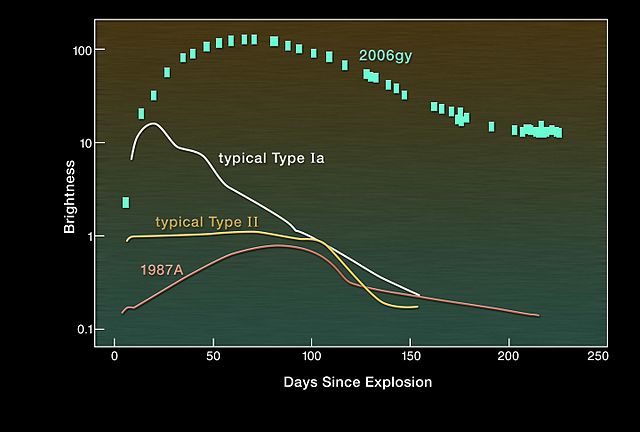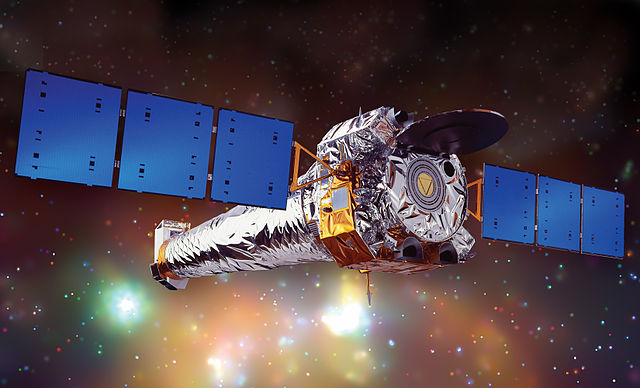SN 2006gy was an extremely energetic supernova, also referred to as a hypernova, that was discovered on September 18, 2006. It was first observed by Robert Quimby and P. Mondol, and then studied by several teams of astronomers using facilities that included the Chandra, Lick, and Keck Observatories. In May 2007 NASA and several of the astronomers announced the first detailed analyses of the supernova, describing it as the "brightest stellar explosion ever recorded". In October 2007 Quimby announced that SN 2005ap had broken SN 2006gy's record as the brightest-ever recorded supernova, and several subsequent discoveries are brighter still. Time magazine listed the discovery of SN 2006gy as third in its Top 10 Scientific Discoveries for 2007.
SN 2006gy and the core of its home galaxy, NGC 1260, viewed in x-ray light from the Chandra X-ray Observatory. The NGC 1260 galactic core is on the lower left and SN 2006gy is on the upper right.
Light curve of SN 2006gy (uppermost intermittent squares) compared with other types of supernovae
This diagram illustrates the pair-instability process that astronomers think triggered the explosion in SN 2006gy. A sufficiently massive star can produce gamma rays of such high energy that some of the photons convert into pairs of electrons and positrons causing a runaway reaction which destroys the star.
SN2006gy (top right) in infrared
Chandra X-ray Observatory
The Chandra X-ray Observatory (CXO), previously known as the Advanced X-ray Astrophysics Facility (AXAF), is a Flagship-class space telescope launched aboard the Space Shuttle Columbia during STS-93 by NASA on July 23, 1999. Chandra was sensitive to X-ray sources 100 times fainter than any previous X-ray telescope, enabled by the high angular resolution of its mirrors. Since the Earth's atmosphere absorbs the vast majority of X-rays, they are not detectable from Earth-based telescopes; therefore space-based telescopes are required to make these observations. Chandra is an Earth satellite in a 64-hour orbit, and its mission is ongoing as of 2024.
Illustration of Chandra
Space Shuttle Columbia, STS-93 launches in 1999
Crew of STS-93 with a scale model
CXO image of the brown dwarf TWA 5B








